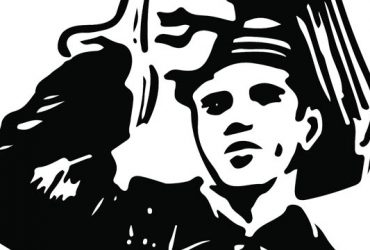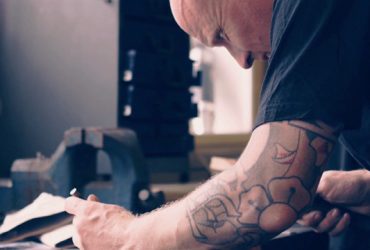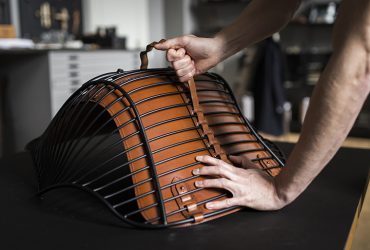
Wrenchmonkees – Motorcycle magic from Denmark
They make wicked remakes of classic motorcycles, have their own clothing line and are lauded by the world’s largest motorcycle manufacturer. These are two thoughtful guys who pamper motorcycles in their den in Denmark, reviving the passion that originally gave birth to the bikes. They are Wrenchmonkees.
The two friends run their workshop, their “Monkey House”, on the Danish island of Amager. The Danes call this place ‘shit island’ because this is where the people from Copenhagen once dumped their rubbish, where people were filthy, and where no one wanted to live. Today, Amager has some of the country’s most expensive addresses. However, a ‘shit island’ cannot be transformed into a gold coast in two seconds flat, so the place is therefore a promised land for people who thrive with contrasts. Here they can revel in the opposites, and right there, somewhere between aesthetics and decay, brutality and tenderness, between meticulousness and filth, genius is born. Meet Per Nielsen and Nicholas Bech. Two passionate perfectionists from ‘shit island’.
The Wrenchmonkees
 PER NIELSEN
PER NIELSEN
Per is the technical designer and one of the two founders of Wrenchmonkees. Since the late 1990s, his hobby has been to build his own motorcycles in various styles, together with Nicholas Bech. In 2008, they turned their passion into a profession, and Wrenchmonkees was officially born. When Per checks out of the workshop, he also plays drums in various Danish bands.
 NICHOLAS BECH
NICHOLAS BECH
Nicholas is the photographer behind Wrenchmonkees. Apart from being part of the design team together with Per, Nicholas is responsible for the welding and forging. He is also behind the ‘Monkee blog’, and he is constantly inspired by new, different underground subcultures and projects.
Check out the video! Visit Wrenchmonkees website.
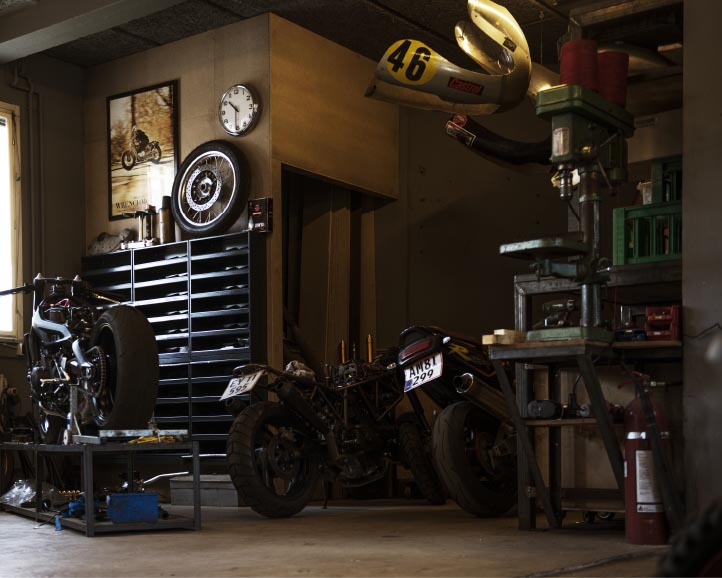 The DNA of the motorcycle
The DNA of the motorcycle
A dark garage It is dirty but cosy. Once in a while the room lights up with the sharp, light-blue flare from welding. It creates a sharp contrast to the mysterious darkness that envelops the motorcycles in Danish ‘coolness’. The grooves on the foreheads of the two men are very prominent as they stand in deep concentration, contemplating their next creation. The motorcycle is naked. Stripped down to its skeleton, its true identity is exposed. Now the two wrenchmonkees can get to work. ‘It should sit well,’ says one. ‘This bike needs some balance,’ says the other. They tell us that it is about finding the parts of the motorcycle that are interesting and then changing the aesthetic expression, but most important of all, that the motorcycle retains its identity. ‘When it is standing there on its wheels and has its chassis with all the necessary functions, we identify the parts that we need to accentuate to showcase the best in the bike,” says Per, and continues, ‘When you look at a car, you see its shape and contrasts. If it is black, you notice the grey aluminium rims. We need to find out what the bike has and accentuate it so that people notice it. You subdue one thing and enhance another. Working with light and shadow.’
They have a special ability to find exactly what makes a bike special. As though they can identify the bike’s innermost spirit, with surgical precision and aesthetic perfectionism. Then they accentuate it so that the rest of us mortals can notice and enjoy it. They turn their gaze back to the bike. ‘If we fiddle with something here,’ explains Nicholas and points to the handlebars, ‘we will have to move some other things. This applies to all areas: lights, seat, height, etc. The lines on the bike must be clear.’ It is about making a plan and following it. Per squats down and taps lightly on one tire and then looks up. ‘If they have a deep tread, the bike should stick to the off-road style. Or you can decide to do the exact opposite. In other words, a style that is not actually a style. A bit like when you wear your Converse sneakers with a blazer to your cousin’s wedding, right?’ He laughs a little. But he is serious.
Thanks for now, fairings – and goodbye
Since the end of the 1990s, the two friends have been building their own motorcycles together, but even they were not aware of the magic they were creating until they took a chance. ‘Find three old bikes that people don’t care about at all. Rebuild them in your own design and create something new and different that people will want to talk about and own,’ says Nicholas about the project they gave themselves. ‘So we did. We created a blog and a website, and then we were contacted from Germany and other places around the world. We slowly began to realise that others were also able to see what we could do,’ says Per.They have run Wrenchmonkees together since 2008, and in their view, they are a part of a new trend where more and more people drop the fairings and want to return to the original concept, but in new ways. ‘For a long time, it’s been about colours and fairings. There was less focus on the functions of the motorbike. This is what we want to return to. The engine, the wheels. Those things that defined the model when the bike was created. For example, Yamaha’s XR1300 is particularly defined by the large engine. It is its identity. They have not changed in 30 years. This must be the heart of the project. So that is what we must accentuate,’ says Per. Several times he has heard people say that they can finally get a real motorcycle again. ‘From the beginning of the 2000s, people began looking for authenticity. People are developing a sense of community. Some call it a hipster culture. I would not use those words. We have just hit on something that people really like – and this is a style that accentuates the original qualities,” he explains.
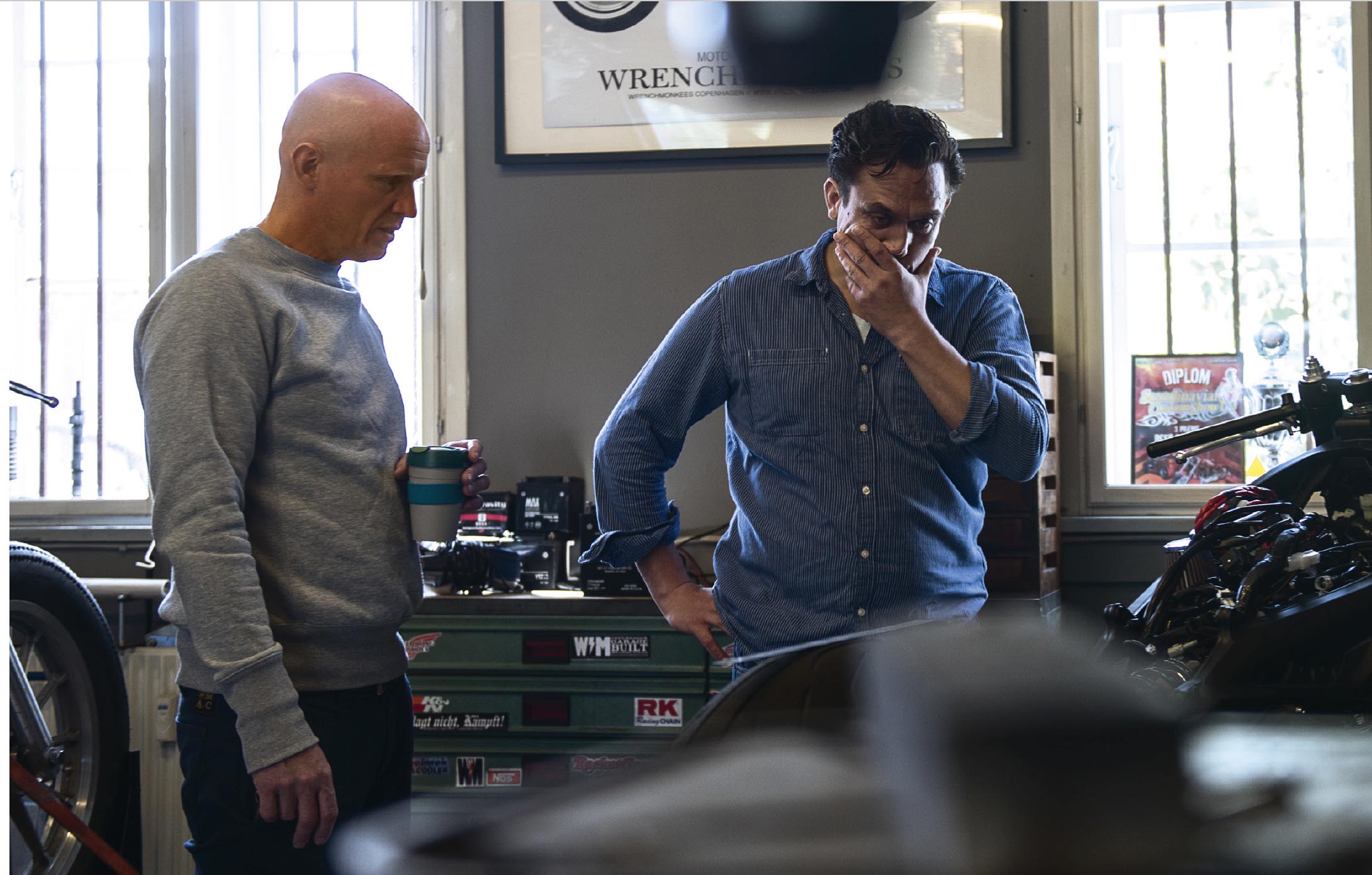 Bare breasts framed
Bare breasts framed
When you look around the workshop, you would not think this was a place that was recently visited by the world’s largest motorcycle manufacturer, Yamaha. Or that customers are standing in line to buy bikes, which are being transported as far away as Senegal, Dubai, Mauritius and even East Timor. But then again. There may be oil, welding equipment and tools all over the place, but there is a system to the mess and all the details have been considered. Even the ladies with the bare breasts are framed. There is no doubt that the raw and rustic expression is a cover for an extreme zeal, perfectionism, meticulousness, and high aesthetic ambitions, and the Danish lads are striving to be completely uncompromising. Something they are largely allowed to be. ‘We have had customers who gave us a complete carte blanche. We do not earn a lot off of it, but we are allowed to define a motorcycle that we like and to build it without many compromises,’ says Nicholas. Of course, they do generally have to be a little flexible when it comes to their ambitions. ‘It is, after all, also about what YOU like. And so we need to find some common ground.
The giant and the small garage
The naked bike is still standing there. The plan has not yet been conceived, and this can take time. It also took time when Yamaha asked the two Wrenchmonkees to re-design their XR1300.
‘It was the ultimate pat on the back, but at the same time, we had this feeling of being a small, unknown garage band that was dragged out of the basement. We were incredibly nervous about meeting the expectations. And we spoke a great deal about being careful to not sell out and become too commercial,’ says Nicholas. The most difficult part of the Yamaha project was not to cut anything. They had to find and buy parts that they could alter. The result was good, Yamaha liked it, and now they are getting started on their fifth bike for this large manufacturer.
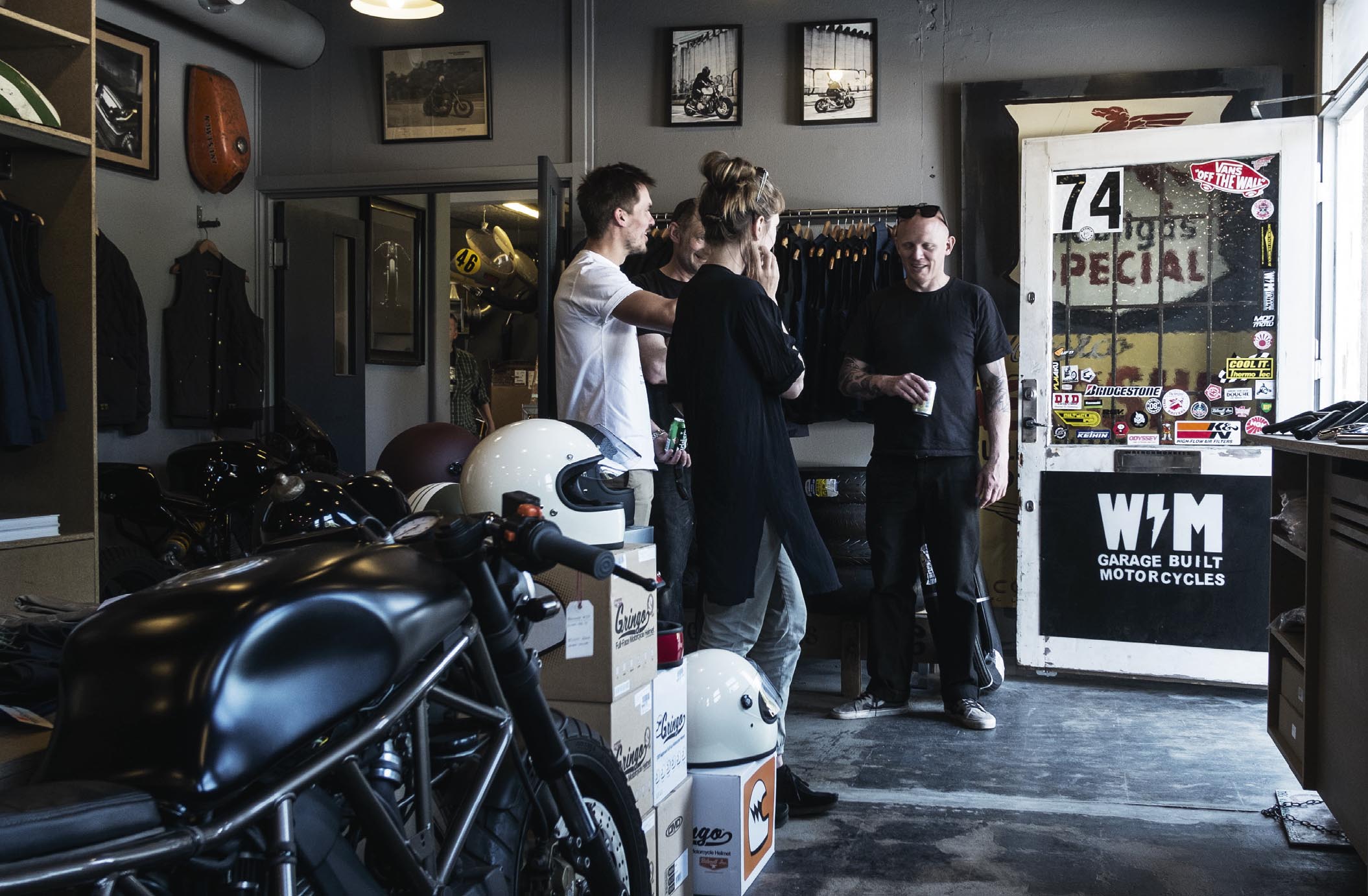 Yamaha MT-09
Yamaha MT-09
The new project is a more modern bike. The base is a Yamaha MT-09. ‘We want to push the boundaries so that we are not copying ourselves. That goes without saying. We want to push the envelope a little. That much we can say. It shouldn’t be an over-the-top show bike, but we will try to do something different,’ they explain about their next project. They cannot unveil what they will do, but while they are standing and looking at the bike before them, they begin talking about their work process.
‘We try to get things to fit together by sticking to some simple rules, where we follow the lines of the motorcycle. We work live on the bike – purely visually,’ says Nicholas and continues, ‘Like we are doing now; and then we look at the bike’s lines. This could certainly be done using graphics software, but you cannot be certain it will work when you walk around it.’ When a giant like Yamaha comes along, you would think that the lads would have to follow a lot of guidelines, but actually they are allowed to play around. Normally, the customer does not decide everything. But then again. When you re-design motorcycles, live out your passion and are good at what you do because of your ambition and refusal to compromise, it can be difficult to listen to the customer’s requests. ‘It is still the customer’s motorcycle, and we do not claim artistic freedom. We are, after all, just a small shop. The customer’s opinion is important, but we need to retain our integrity as well. I would say that we control 70-80% and the customer does the rest,’ says Per. ‘So in that way, we have probably become a bit snobbish,’ he says and laughs.
Motor oil in the blood and Kansas on the Body
Nicholas and Per are project initiators. Without a question. They see opportunities rather than limitations, so when the opportunity to release a clothing collection presented itself, they thought ‘Why not?’ ‘Kansas felt that it was a cool idea, and we thought it was exciting,’ says Per, who explains that they hope – and very much count on – that a lot will happen with the collection within the next couple of years. ‘Communities grow, festivals grow. People look cool and wear great clothing. We have a brand that people want to be identified with,’ says Per, underlining that they should always tend to their passion, which is the motorcycles. ‘The people around us must understand who we are. Yamaha, for example, are actually mega commercial, but we feel they are authentic. We need to be able to be happy with what we see in the mirror,’ Nicholas concludes. There is no doubt that even though the two wrenchmonkees may be world renowned, it is not the business plan that spurs them onwards – it’s passion.
 MONKEE #55 – MONKEEFIST
MONKEE #55 – MONKEEFISTMonkeefist is the result of a challenge from Yamaha, where a modern Yamaha model had to be converted into a Yard Built speciality. With the XJR, we were determined to show what you can do with the bike and how cool it could look in a café-racer style. It would have been easy to give it a makeover with a fresh colour theme and a new seat, but we wanted to push the boundaries and do something inspiring for XJR fans.
By: Sarah Sol Rasmusen
Photo: Michael “Caddy” Søndergaard

